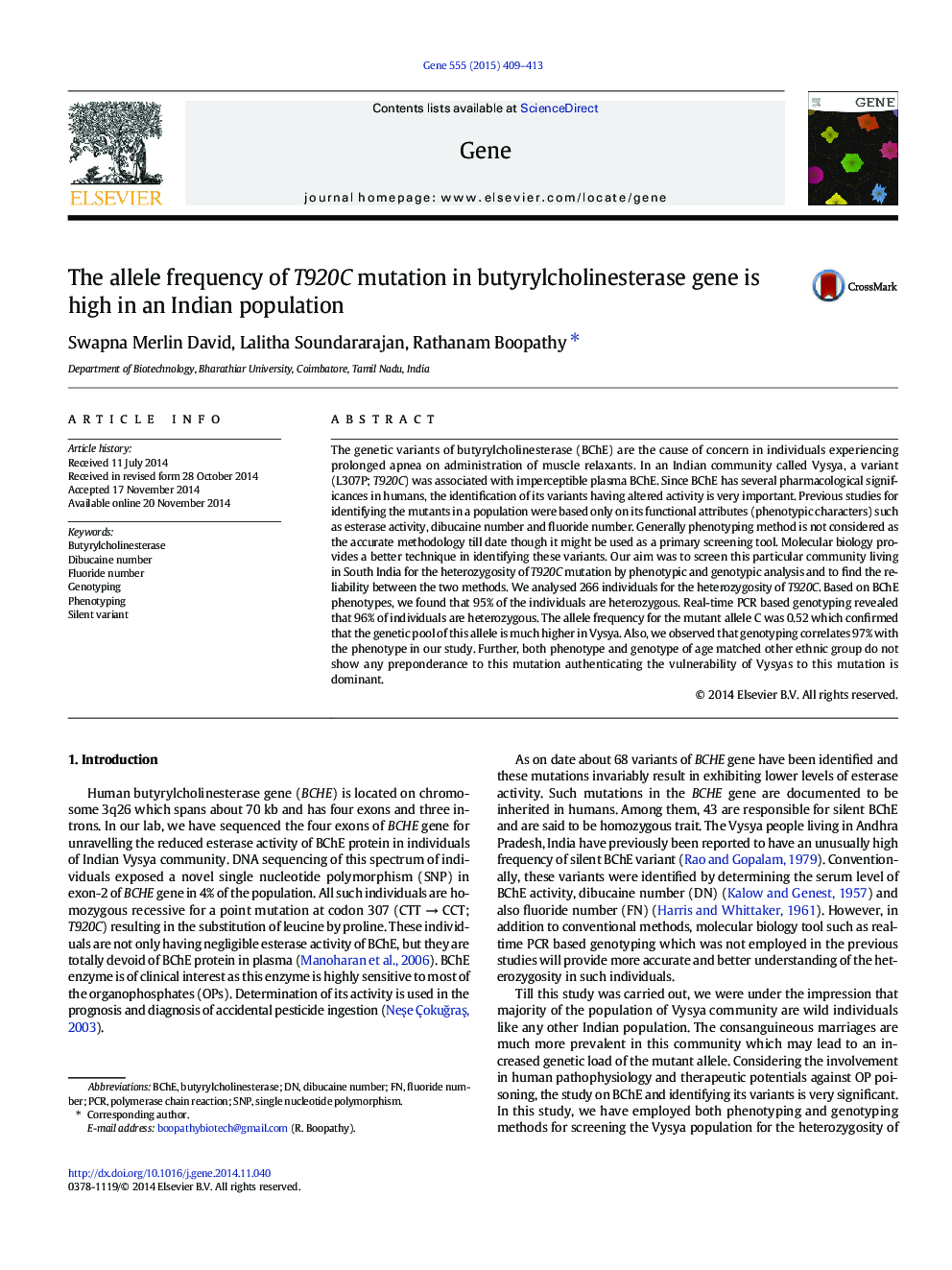| کد مقاله | کد نشریه | سال انتشار | مقاله انگلیسی | نسخه تمام متن |
|---|---|---|---|---|
| 5905590 | 1159908 | 2015 | 5 صفحه PDF | دانلود رایگان |

- We report a high frequency of a BChE mutant allele (T920C) in the Vysya community.
- Out of 266 individuals analysed, 96% were heterozygous for the mutant allele.
- 4% of the study population was homozygous mutant.
- None of the individuals were observed to be wild (T/T) in genotyping.
- Phenotype-genotype covenant occurred in 97% of the samples.
The genetic variants of butyrylcholinesterase (BChE) are the cause of concern in individuals experiencing prolonged apnea on administration of muscle relaxants. In an Indian community called Vysya, a variant (L307P; T920C) was associated with imperceptible plasma BChE. Since BChE has several pharmacological significances in humans, the identification of its variants having altered activity is very important. Previous studies for identifying the mutants in a population were based only on its functional attributes (phenotypic characters) such as esterase activity, dibucaine number and fluoride number. Generally phenotyping method is not considered as the accurate methodology till date though it might be used as a primary screening tool. Molecular biology provides a better technique in identifying these variants. Our aim was to screen this particular community living in South India for the heterozygosity of T920C mutation by phenotypic and genotypic analysis and to find the reliability between the two methods. We analysed 266 individuals for the heterozygosity of T920C. Based on BChE phenotypes, we found that 95% of the individuals are heterozygous. Real-time PCR based genotyping revealed that 96% of individuals are heterozygous. The allele frequency for the mutant allele C was 0.52 which confirmed that the genetic pool of this allele is much higher in Vysya. Also, we observed that genotyping correlates 97% with the phenotype in our study. Further, both phenotype and genotype of age matched other ethnic group do not show any preponderance to this mutation authenticating the vulnerability of Vysyas to this mutation is dominant.
Journal: Gene - Volume 555, Issue 2, 25 January 2015, Pages 409-413